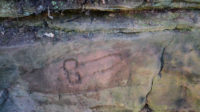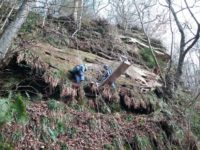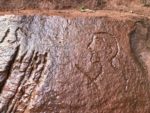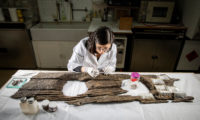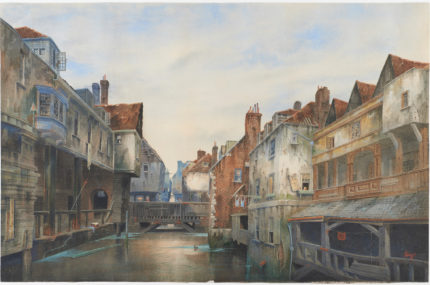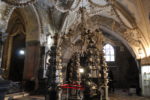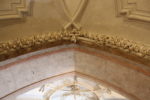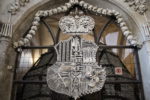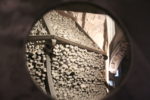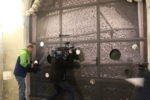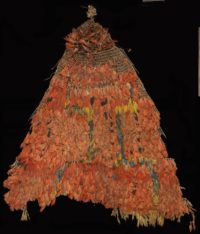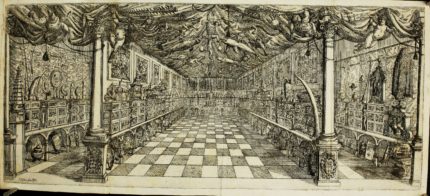
An artifact stored in the Washington State University (WSU) Museum of Anthropology for 40 years has been identified as the oldest tattooing device in North America. The tool, two prickly pear cactus spines inserted into the soft middle of a lemonade sumac stem and bound with yucca leaf strips, was excavated in 1972 from a midden at the Turkey Pen site in the Greater Bears Ears Landscape of southeastern Utah. One of the points of the spines was broken off, which is probably why it was discarded into the midden pile. Coprolites and corn cobbs in the midden layer that included the artifact were radiocarbon dated to a range of 79-130 A.D. during the Basketmaker II period (ca. 500 B.C. – 500 A.D.).
There are historical accounts of tattooing practices in Native American peoples of the southwest after the arrival of Europeans, but colonial authorities generally considered it a barbarous cultural expression and suppressed it actively. It was poorly documented and traditional tattooing was frequently prohibited. It largely died out in North America after European contact.
Evidence of indigenous tattooing before that is very slim. No tattoos have been found on pre-contact mummified human remains and there are no ancient written accounts of the practice. Rare surviving tattoo tools and depictions in ancient iconography are all scholars have had to go on when studying body modification and adornment in southwestern Native American cultures before they were disrupted by European colonization, and it’s unclear whether the artworks depict tattoos, body paint or scarification.
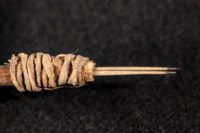 The device was discovered by WSU anthropology PhD candidate Andrew Gillreath-Brown during an inventory of the Turkey Pen material. Cactus spine tattoo tools have been found before at Native American sites in Arizona and New Mexico, but the oldest of them date to between 1100-1280 A.D. This device looked like ones found elsewhere in the southwest only it was used a thousand years before them.
The device was discovered by WSU anthropology PhD candidate Andrew Gillreath-Brown during an inventory of the Turkey Pen material. Cactus spine tattoo tools have been found before at Native American sites in Arizona and New Mexico, but the oldest of them date to between 1100-1280 A.D. This device looked like ones found elsewhere in the southwest only it was used a thousand years before them.
The tool consists of a 3 ½ inch wooden skunkbush sumac handle bound at the end with split yucca leaves and holding two parallel cactus spines, stained black at their tips.
“The residue staining from tattoo pigments on the tip was what immediately piqued my interest as being possibly a tattoo tool,” Gillreath-Brown said.
Encouraged by Aaron Deter-Wolf, a friend and co-author of the study who has done studies on ancient tattooing and edited several books on the subject, Gillreath-Brown analyzed the tips with a scanning electron microscope, X-ray florescence and energy dispersive ray spectroscopy. For good measure, he did several test tattoos using a replica on pig skin.
He saw the crystalline structure of pigment and determined it likely contained carbon, a common element in body painting and tattooing.
The find, said Gillreath-Brown, “has a great significance for understanding how people managed relationships and how status may have been marked on people in the past during a time when population densities were increasing in the Southwest.”
The study has been published in the Journal of Archaeological Science: Reports and can be read in its entirety for free online.
